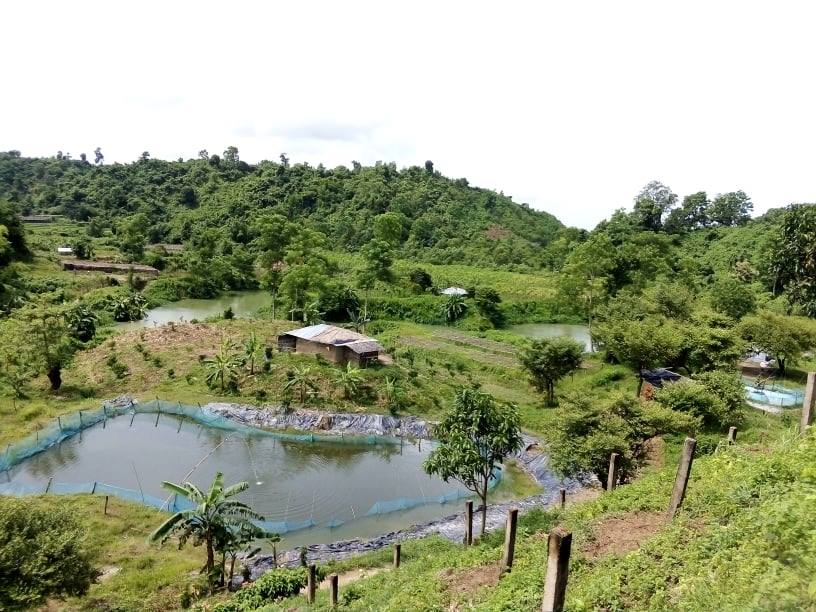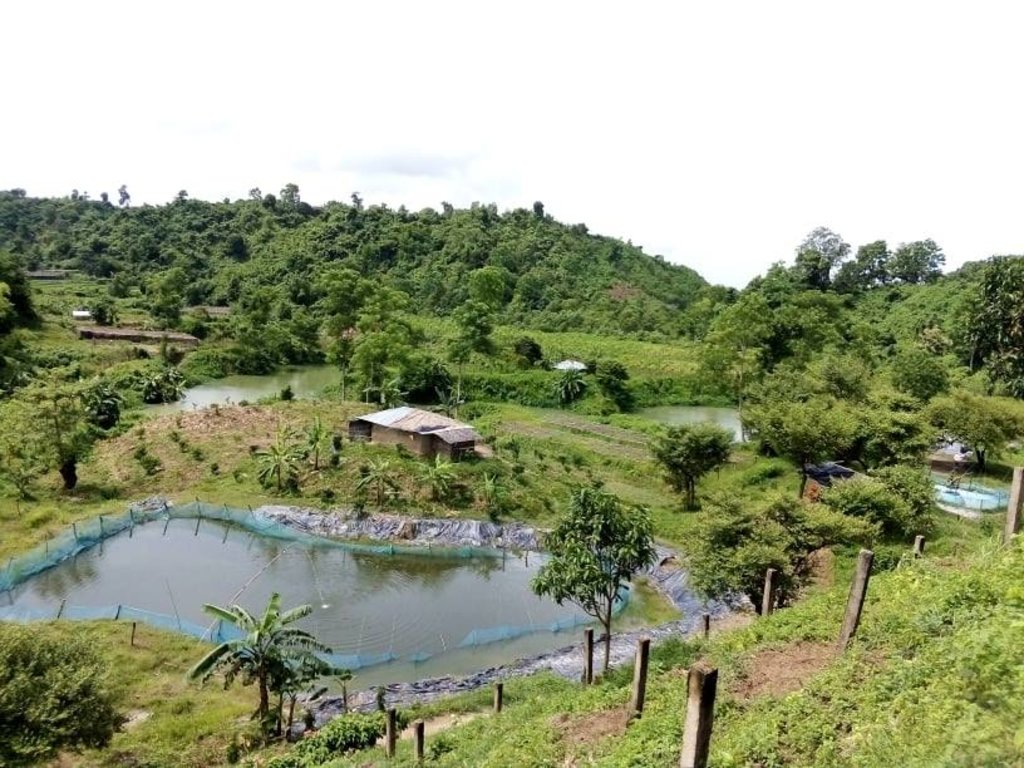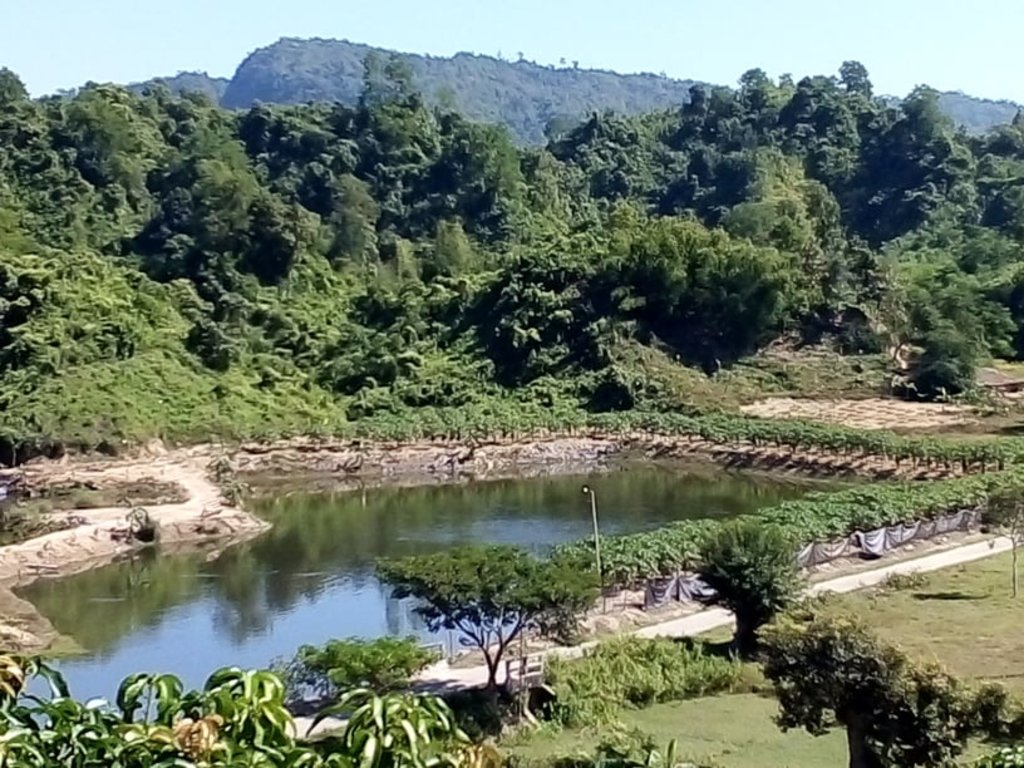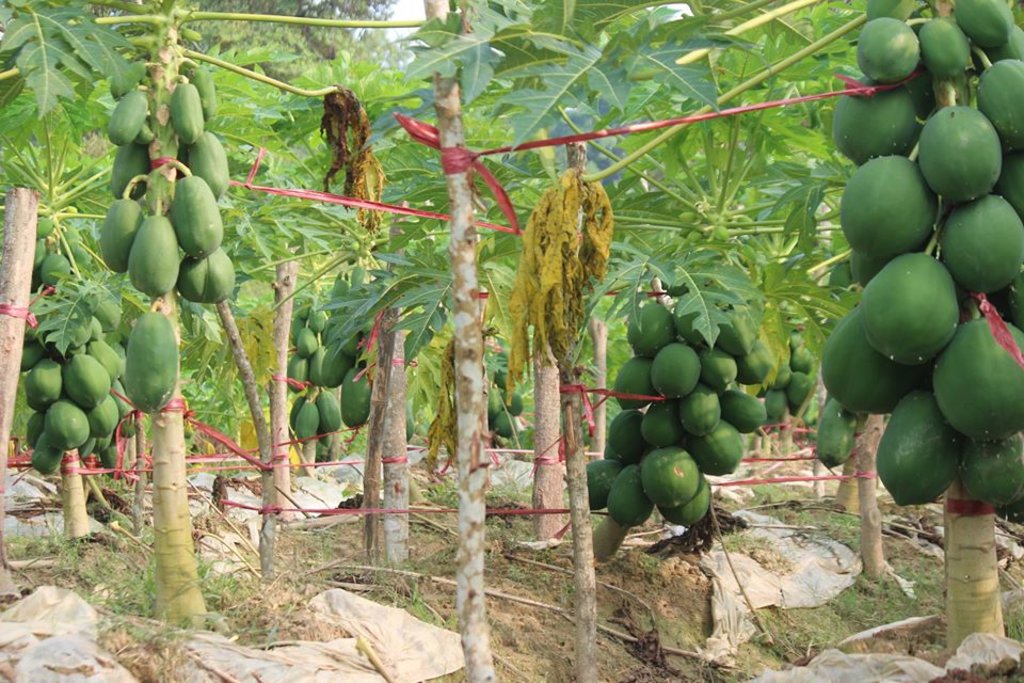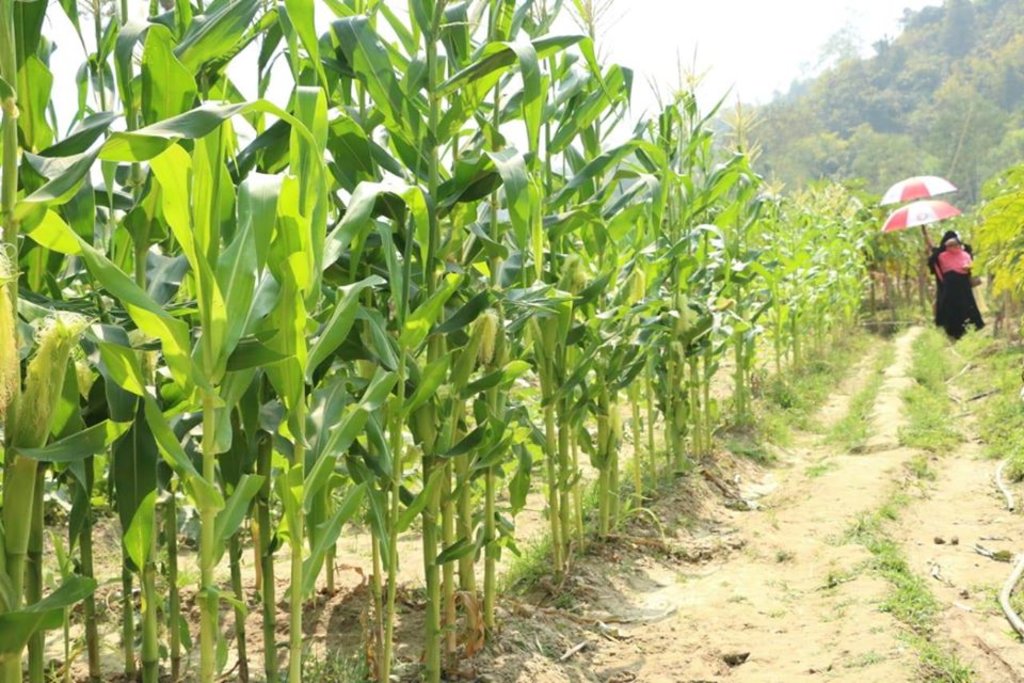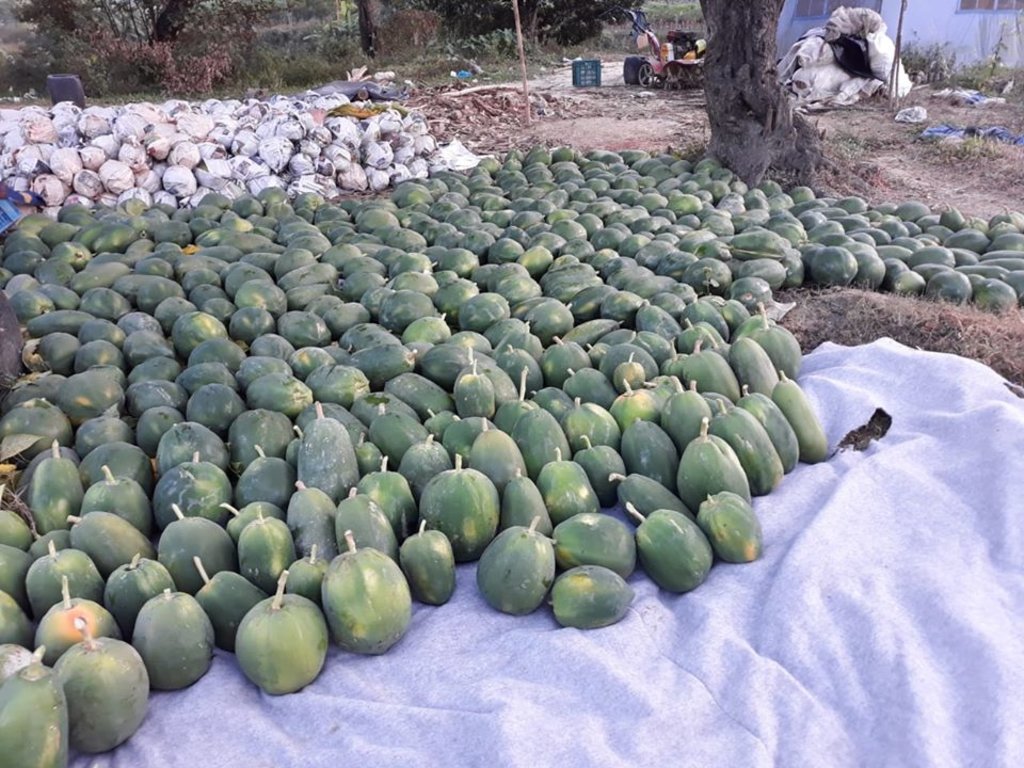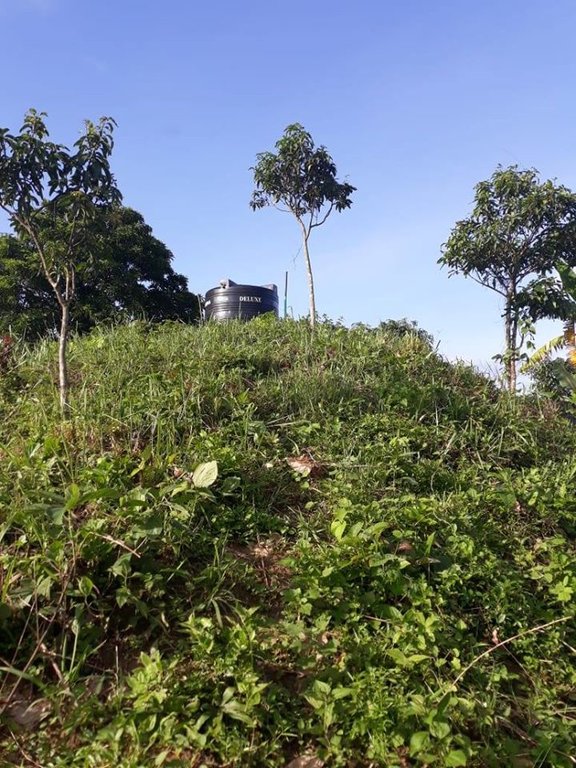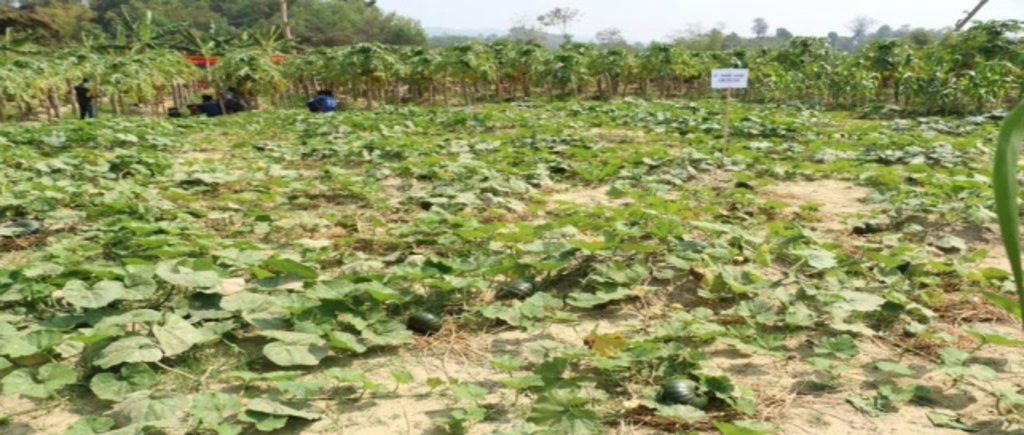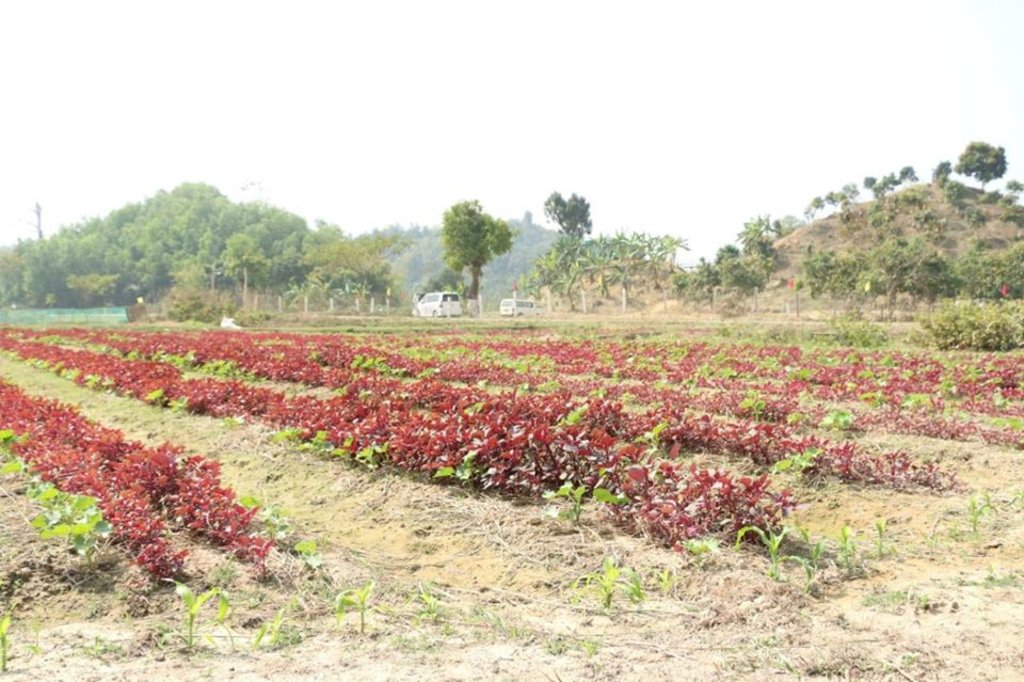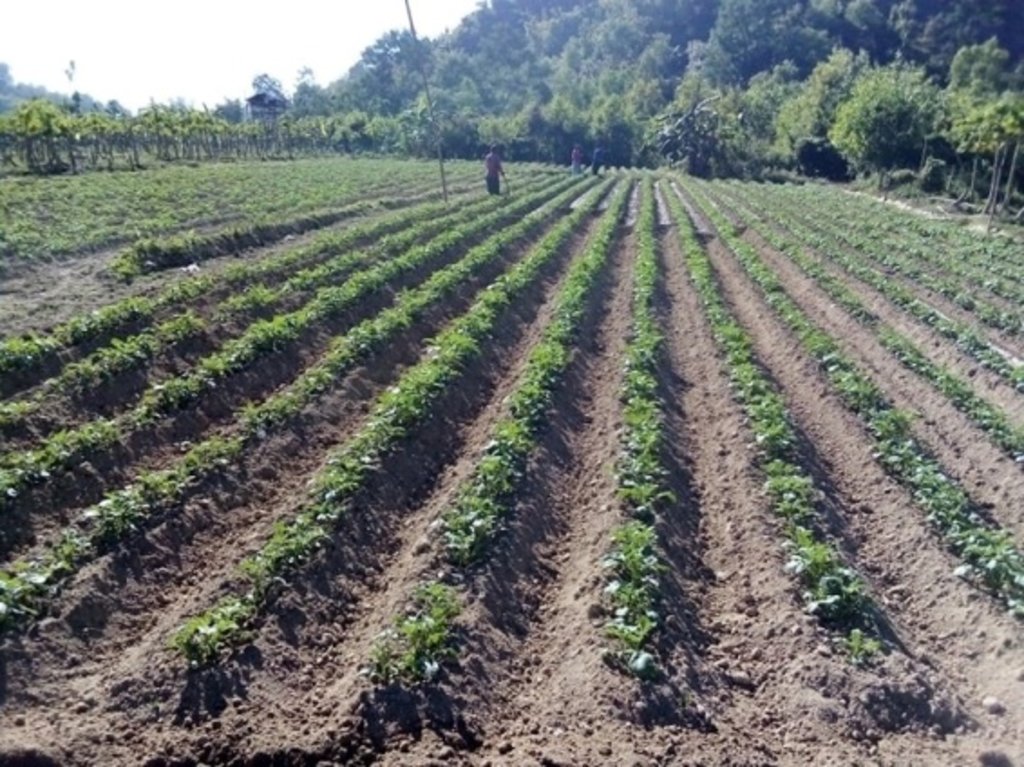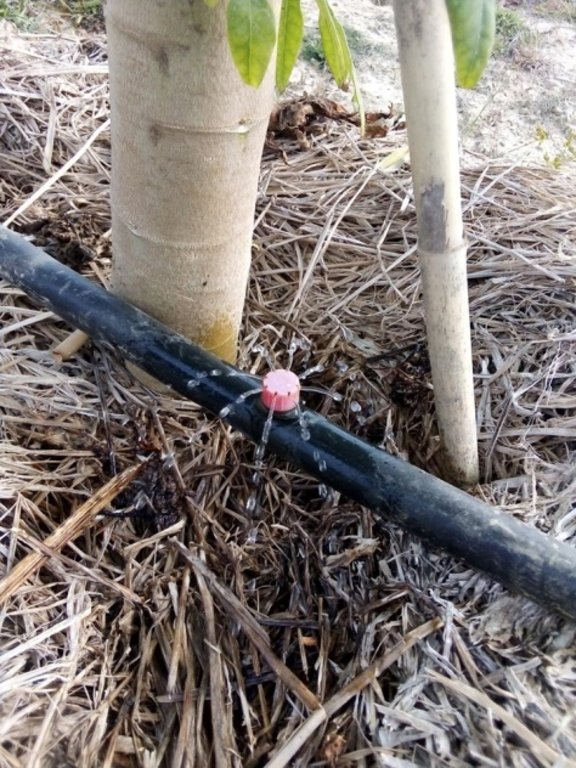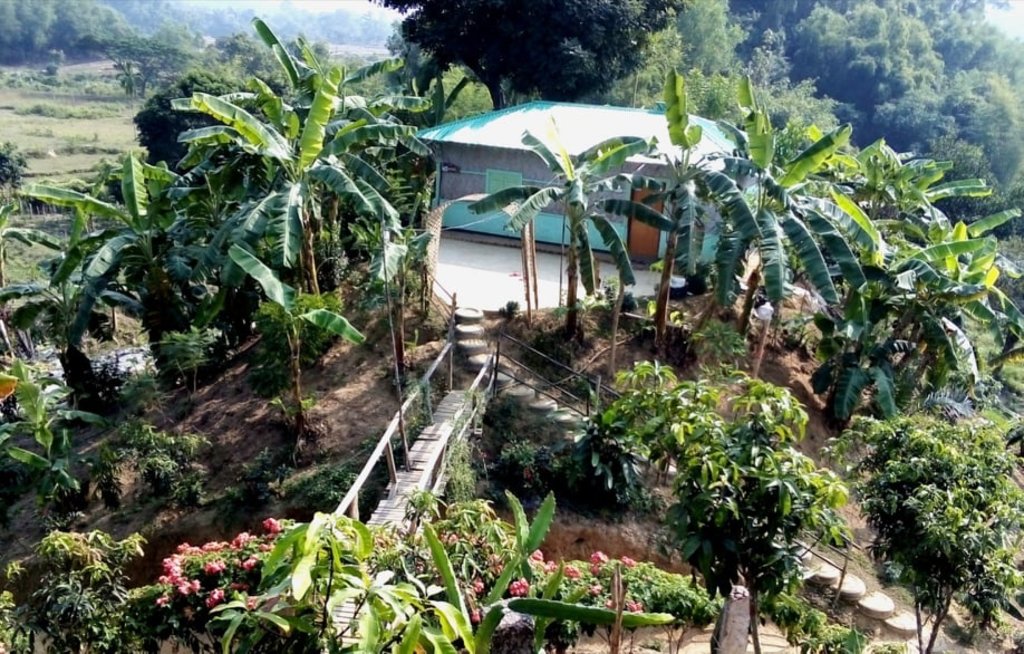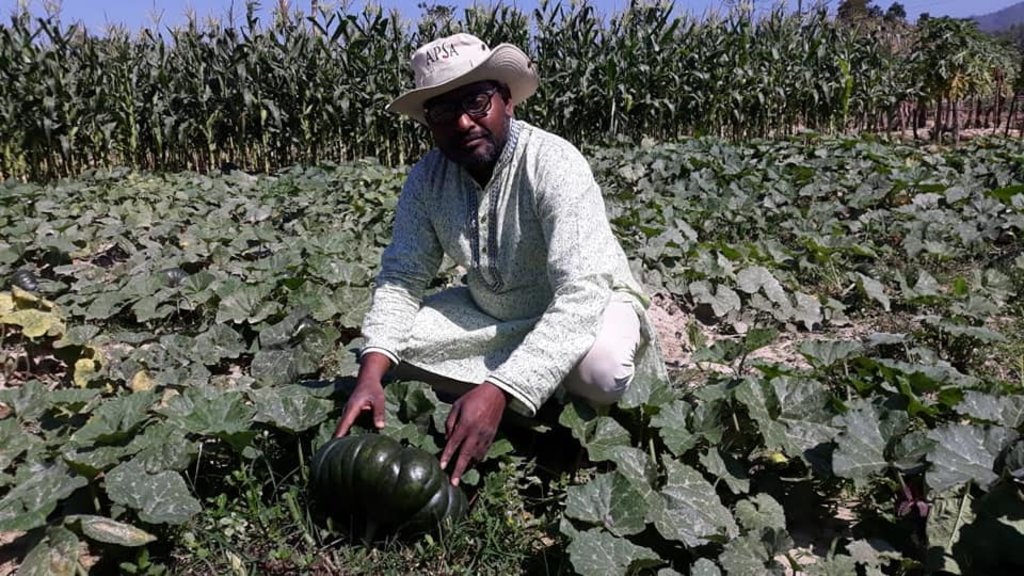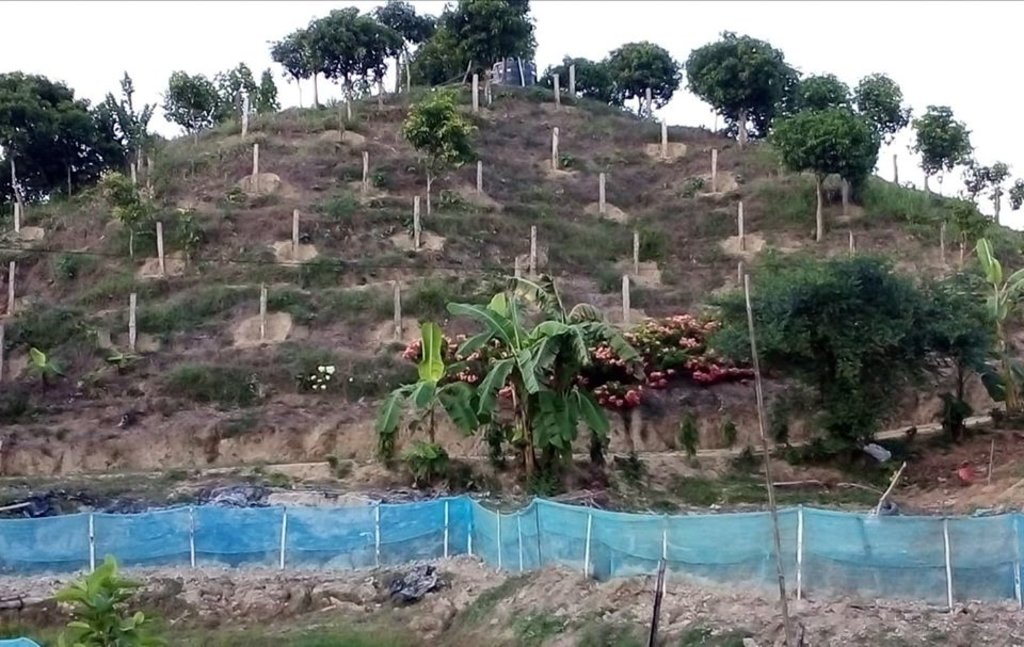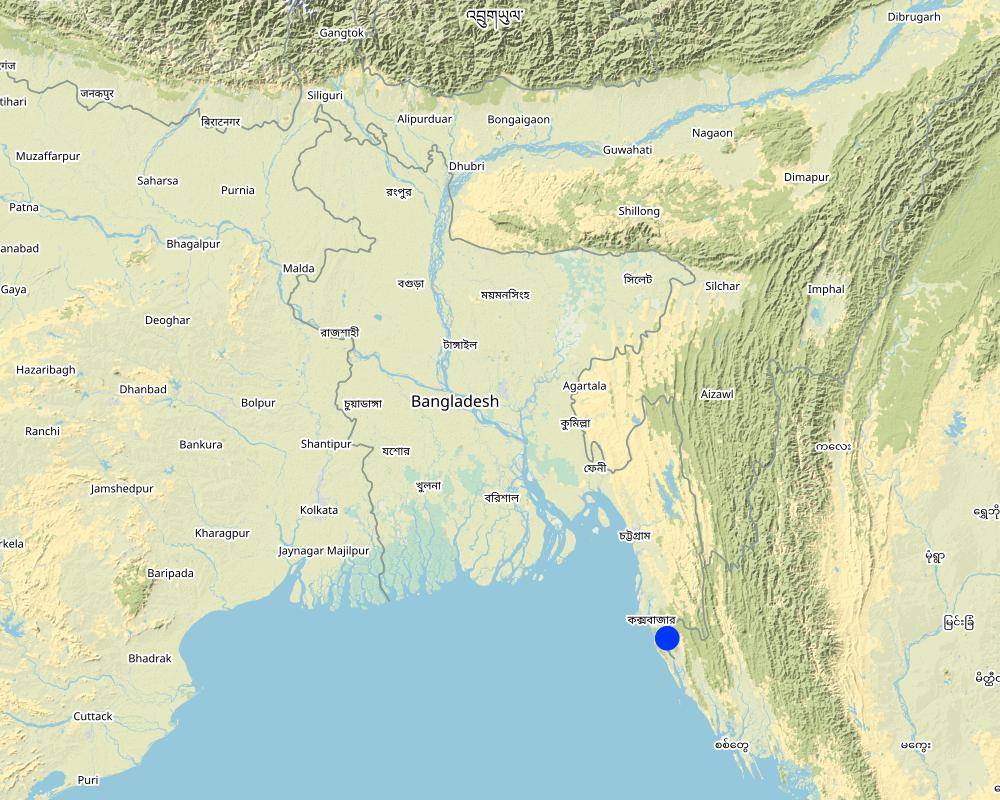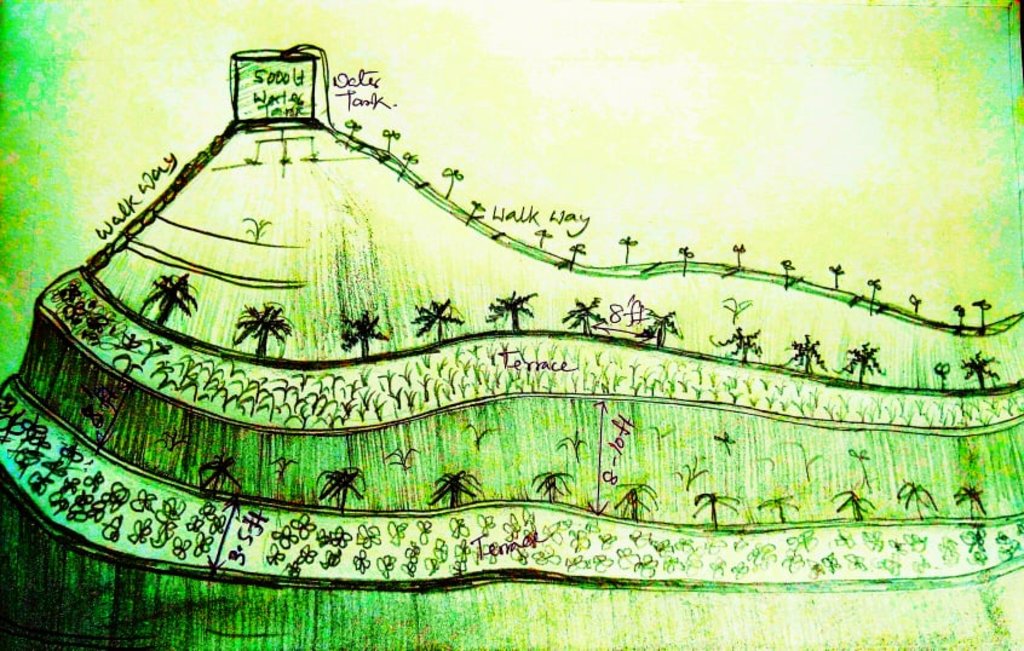Organic agro-ecotourism in the low hills of the Chittagong Hills Tract [Bangladesh]
- Creation:
- Update:
- Compiler: Jalal Uddin Md. Shoaib
- Editor: –
- Reviewers: Rima Mekdaschi Studer, William Critchley
Somonnito khamar
technologies_5761 - Bangladesh
View sections
Expand all Collapse all1. General information
1.2 Contact details of resource persons and institutions involved in the assessment and documentation of the Technology
Key resource person(s)
land user:
Ahammad Kaiser Uddin
Organic Firm and Eco Park Limited, kaiseruddinahmed@gmail.com
Bangladesh
SLM specialist:
1.3 Conditions regarding the use of data documented through WOCAT
The compiler and key resource person(s) accept the conditions regarding the use of data documented through WOCAT:
Ja
1.4 Declaration on sustainability of the described Technology
Is the Technology described here problematic with regard to land degradation, so that it cannot be declared a sustainable land management technology?
Nee
Comments:
This technology could be an example of management of low hill landscapes enhancing agro-ecomanagement and tourism. The recent influx of plain land inhabitants of the country has increased many fold. This type of farming will reduce land degradation and in addition the area could be a boost to attract tourists.
2. Description of the SLM Technology
2.1 Short description of the Technology
Definition of the Technology:
Transforming an area of the denuded low hills of the Chittagong Hill Tracts (CHT) into an organic farm and tourism site
2.2 Detailed description of the Technology
Description:
A local four-member team of committed, young and skilled entrepreneurs, together with agriculture professionals, initiated the transformation of low denuded and abandoned hills in 2017 at Gorjonbonia, Gondom union, Naikshayangchari, Bandarban. Currently they are producing and marketing organic farm fresh products. The products are 50 (fifty) types of fruits and vegetables (including nursery plants and seedlings), fish, poultry, and diary product. They make and use trichoderma (a type of fungus) compost, banana choppings, vermicompost (from worms) and organic fertilizer in the 61 ha farm - which is half hill and half valley. The landscape has been transformed into green landscape with a natural lake. There are orchards, eco-cottages, an organic café and a restaurant with a fresh juice bar.
This eco-tourist center is only 50 minutes marine drive journey from Cox’s Bazar Airport. The farm is surrounded by highlands, and slopes have been protected by planting bananas, citrus (lemon), bamboo and forest plants to protect the slopes with vegetative cover. The farm group has gained its certified organic credentials and has become a member of the International Federation of Organic Agriculture Movements (IFOAM), and also of IFOAM Asia. The major activities and achievements are:
1. Creating a center of excellence in agro-ecotourism and organic farming in Bangladesh.
2. Enriching knowledge about organic production and agro-ecotourism by providing practical training and capacity building among local entrepreneurs.
3. Developing skills in organic farming and contract farming to produce healthy and environmently friendly farm products.
4. Establishing an organic agro-eco-park with commercial cropping, orchards, fish culture, livestock, a nursery and organic fertilizer and pesticides.
5. Attracting tourists to taste organic and farm-fresh safe food and to enjoy the natural beauty of the agro-eco-park.
6. Creating a thousand contract growers in an association surrounding the model park.
7. Acting as a responsible corporate citizen through CSR (Corporate Social Responsibility).
8. Creating and maintaining a strong customer value chain.
Adequate measures have been taken to stabilize hillside terraces by planting trees and natural bushes. Various crops are planted on the terraces including sweet corn and taro. A water tank is set on top of the hill at just over 100 meters elevation to provide irrigation to the trees in the orchards by drip irrigation – which avoids soil erosion. Water is harvested from hillside and captured by a small dam/dike. The farm park provides a hilly walk-way, where visitors can enjoy a hill stream and green hills with a large number of birds and monkeys. Boating, fishing and angling are pursuits provided. Visitors come to enjoy the agro-eco-park: they taste and buy - farm fresh fruits on the spot. As well as fruits, key products comprise vegetables, fish (from the sea as well as from aquaculture) and livestock products. There is a sales center in Cox's Bazar city.
2.3 Photos of the Technology
2.5 Country/ region/ locations where the Technology has been applied and which are covered by this assessment
Country:
Bangladesh
Specify the spread of the Technology:
- applied at specific points/ concentrated on a small area
Is/are the technology site(s) located in a permanently protected area?
Nee
Map
×2.6 Date of implementation
Indicate year of implementation:
2018
2.7 Introduction of the Technology
Specify how the Technology was introduced:
- through land users' innovation
Comments (type of project, etc.):
The endeavor had a long journey since February- 2018 to establish an Integrated Organic Agro Eco Park in 61ha land. They manage the hill slope and the valley with adequate management measures to shape the area attractive, productive and changing bare/barren low hills to green. They have planted 400 Thai Guava, 1000 Banana, 250 Bari Malta-1, 250 Borai (Ziziphos) , 350 Dragon, 4000 Papaya, etc. There is a pond of about 3 ha for aquaculture, 20 cattle, 50 country laying chicken, one Eco Cottage and a sales center. The farm is very close to tourism city Cox’s Bazar and it is located at Nikkonchory, Bandarban district.
Previously the landscape was almost bare with some shrubs and the valley was cultivated for paddy only in rainy season. Now it is become a commercial Organic Agro Eco Park within very short time. They now produce and market Organic & Farm Fresh agro products, of which 20 types of Fruits, Vegetables, Fish, Poultry, Cattle, Nursery plants, readymade vegetable seedlings, Trichodarma compost and Organic fertilizer in this farm. There are 20 people working regularly as day labor of which female Chakma and Tonchinga-10 and male-10).
By and large a bare landscape had been transformed to green land cover with eco-tourism opportunities.
3. Classification of the SLM Technology
3.1 Main purpose(s) of the Technology
- improve production
- reduce, prevent, restore land degradation
- conserve ecosystem
3.2 Current land use type(s) where the Technology is applied
Land use mixed within the same land unit:
Ja
Specify mixed land use (crops/ grazing/ trees):
- Agroforestry

Cropland
- Tree and shrub cropping
- Mixed cropping: both annual and perenniall
Number of growing seasons per year:
- 3
Specify:
Vegetables in rabi- vegetables in Kharif-1 and Vegetables in Kharif-2, in addition fruit crops in round the year.
Is intercropping practiced?
Nee
Is crop rotation practiced?
Nee

Other
Specify:
Tourism
Remarks:
In addition to cropping, the area is also organized to be used for tourism. Fresh fruits and organic vegetables at a sales point, and a restaurant offering fresh juice etc, were set up to attract tourists.
3.3 Has land use changed due to the implementation of the Technology?
Has land use changed due to the implementation of the Technology?
- Yes (Please fill out the questions below with regard to the land use before implementation of the Technology)
Land use mixed within the same land unit:
Ja
Specify mixed land use (crops/ grazing/ trees):
- Agroforestry

Cropland
- Perennial (non-woody) cropping
- Papaya, Dragon fruits etc.
3.4 Water supply
Water supply for the land on which the Technology is applied:
- mixed rainfed-irrigated
Comments:
Surface water sources are hill streams and ponds, and there is a submersible deep tube well to provide irrigation (by drip)
3.5 SLM group to which the Technology belongs
- agroforestry
- integrated crop-livestock management
- improved ground/ vegetation cover
3.6 SLM measures comprising the Technology

agronomic measures
- A1: Vegetation/ soil cover
- A2: Organic matter/ soil fertility

vegetative measures
- V1: Tree and shrub cover

structural measures
- S1: Terraces
- S2: Bunds, banks

management measures
- M1: Change of land use type
- M2: Change of management/ intensity level
- M3: Layout according to natural and human environment
3.7 Main types of land degradation addressed by the Technology

soil erosion by water
- Wt: loss of topsoil/ surface erosion

chemical soil deterioration
- Cn: fertility decline and reduced organic matter content (not caused by erosion)

biological degradation
- Bc: reduction of vegetation cover
3.8 Prevention, reduction, or restoration of land degradation
Specify the goal of the Technology with regard to land degradation:
- reduce land degradation
- restore/ rehabilitate severely degraded land
4. Technical specifications, implementation activities, inputs, and costs
4.1 Technical drawing of the Technology
Technical specifications (related to technical drawing):
The technology had transformed a bare hilly areas to plantation on slopping lands and seasonal agricultural farm with time and space. The major activities are as follows:
1.Leasing the total land for 25 years from one land lord/owner by doing an registered agreement and mode of payment in every 5 years at rate of 3,60,000/- increasing at the rate of 20% of 3,60,000/-for next 4 installment so total lease money is BDT 19,44,000/-.
2.Infrastructural arrangements like make walk way to facilitate watch and ward; pond for fisheries, dam, dike and nursery etc, cost about BDT 30,00,000/-
3.Residential house for staff and labor shed preparation BDT 8,00,000/=
4.Agricultural machineries and agricultural tools/equipment like, LLP, generator, power line, mini tractor, etc BDT 6,00,000/=
5.Earth work, boundary fencing wire, pillar and live fencing etc BDT 6,00,000/-
6.Solar panel for electricity set up etc BDT 2,00,000/-
7.Irrigation system and drainage system set up BDT 7,00,000/-
8.Irrigation cost for 2500 papaya and others orchards BDT 5,00,000/-
9.Saplings of fruit trees, cattles, etc BDT 4,00,000/-
10.Plastic and bamboo materials and polythene for newly excavated pond dike and roads etc. BDT-3,00,000/=
11.Organic and Chemical fertilizer etc BDT 3,00,000/=
12.Labour and operation cost/expenses for 2 years (February 2018- December-2019) BDT 21,70,000/=
13.Staff salary and entertainment BDT 8,00,000/=
14.Vehicles and furniture etc. BDT 5,00,000/=
15.Travelling Transport, AGM, Meeting etc BDT 10,00,000/=
16.Fisheries, feed, Fringe, expert consultancy etc BDT 20,00,000/=
17.Computer and printers etc.BDT 55,000/-,
Approximately cost is more then 1, 20,00,000/=
Author:
Kaiser Uddin (One of the team members)
Date:
12/02/2020
4.2 General information regarding the calculation of inputs and costs
Specify how costs and inputs were calculated:
- per Technology area
Indicate size and area unit:
61 ha
other/ national currency (specify):
BDT
If relevant, indicate exchange rate from USD to local currency (e.g. 1 USD = 79.9 Brazilian Real): 1 USD =:
105.0
Indicate average wage cost of hired labour per day:
BDT 500/day /person
4.4 Costs and inputs needed for establishment
If you are unable to break down the costs in the table above, give an estimation of the total costs of establishing the Technology:
12000000.0
If land user bore less than 100% of costs, indicate who covered the remaining costs:
100%
Comments:
Costs supported from the team and also from bank. as loan.
4.6 Costs and inputs needed for maintenance/ recurrent activities (per year)
If you are unable to break down the costs in the table above, give an estimation of the total costs of maintaining the Technology:
3000000.0
If land user bore less than 100% of costs, indicate who covered the remaining costs:
100%
Comments:
All cost born by the team and financial support from bank as loan. Note: exchange rate at time of writing was 85 BHT = US$, currently (end 2022) 105 BHT - US$
4.7 Most important factors affecting the costs
Describe the most determinate factors affecting the costs:
Labor availability
5. Natural and human environment
5.1 Climate
Annual rainfall
- < 250 mm
- 251-500 mm
- 501-750 mm
- 751-1,000 mm
- 1,001-1,500 mm
- 1,501-2,000 mm
- 2,001-3,000 mm
- 3,001-4,000 mm
- > 4,000 mm
Agro-climatic zone
- sub-humid
5.2 Topography
Slopes on average:
- flat (0-2%)
- gentle (3-5%)
- moderate (6-10%)
- rolling (11-15%)
- hilly (16-30%)
- steep (31-60%)
- very steep (>60%)
Landforms:
- plateau/plains
- ridges
- mountain slopes
- hill slopes
- footslopes
- valley floors
Altitudinal zone:
- 0-100 m a.s.l.
- 101-500 m a.s.l.
- 501-1,000 m a.s.l.
- 1,001-1,500 m a.s.l.
- 1,501-2,000 m a.s.l.
- 2,001-2,500 m a.s.l.
- 2,501-3,000 m a.s.l.
- 3,001-4,000 m a.s.l.
- > 4,000 m a.s.l.
Indicate if the Technology is specifically applied in:
- convex situations
Comments and further specifications on topography:
Low hills with valleys and hill streams
5.3 Soils
Soil depth on average:
- very shallow (0-20 cm)
- shallow (21-50 cm)
- moderately deep (51-80 cm)
- deep (81-120 cm)
- very deep (> 120 cm)
Soil texture (topsoil):
- medium (loamy, silty)
Soil texture (> 20 cm below surface):
- medium (loamy, silty)
Topsoil organic matter:
- low (<1%)
5.4 Water availability and quality
Ground water table:
5-50 m
Availability of surface water:
excess
Water quality (untreated):
good drinking water
Water quality refers to:
both ground and surface water
Is water salinity a problem?
Nee
Is flooding of the area occurring?
Ja
Regularity:
episodically
Comments and further specifications on water quality and quantity:
Valleys sometimes subject to flash floods
5.5 Biodiversity
Species diversity:
- medium
Habitat diversity:
- medium
Comments and further specifications on biodiversity:
Before farming the hills were almost denuded and valleys were remain fallow or grow poor crops (Betel leaf).
5.6 Characteristics of land users applying the Technology
Sedentary or nomadic:
- Sedentary
Market orientation of production system:
- commercial/ market
Off-farm income:
- 10-50% of all income
Relative level of wealth:
- rich
Individuals or groups:
- groups/ community
Level of mechanization:
- manual work
- mechanized/ motorized
Gender:
- men
Age of land users:
- middle-aged
Indicate other relevant characteristics of the land users:
The users are a team or group of 4 peoples of the area. They have different background like Agriculturist, Banker, Businessmen and land owners of the area.
5.7 Average area of land used by land users applying the Technology
- < 0.5 ha
- 0.5-1 ha
- 1-2 ha
- 2-5 ha
- 5-15 ha
- 15-50 ha
- 50-100 ha
- 100-500 ha
- 500-1,000 ha
- 1,000-10,000 ha
- > 10,000 ha
Is this considered small-, medium- or large-scale (referring to local context)?
- large-scale
5.8 Land ownership, land use rights, and water use rights
Land ownership:
- company
Land use rights:
- leased
Water use rights:
- open access (unorganized)
Are land use rights based on a traditional legal system?
Ja
5.9 Access to services and infrastructure
health:
- poor
- moderate
- good
education:
- poor
- moderate
- good
technical assistance:
- poor
- moderate
- good
employment (e.g. off-farm):
- poor
- moderate
- good
markets:
- poor
- moderate
- good
energy:
- poor
- moderate
- good
roads and transport:
- poor
- moderate
- good
drinking water and sanitation:
- poor
- moderate
- good
financial services:
- poor
- moderate
- good
Comments:
The team consists of members , who have skill and capacity to deal with the system.
6. Impacts and concluding statements
6.1 On-site impacts the Technology has shown
Socio-economic impacts
Production
crop production
Quantity before SLM:
It was a denuded area
Quantity after SLM:
different types of crop grown
crop quality
Comments/ specify:
Crops are organic
fodder production
Comments/ specify:
Fodder produce for the cattle they are raring
product diversity
Comments/ specify:
A good number of crops grown
Income and costs
farm income
Comments/ specify:
They grow crops for market and they have good access to markets
Socio-cultural impacts
SLM/ land degradation knowledge
Ecological impacts
Soil
soil moisture
soil cover
soil loss
soil organic matter/ below ground C
Biodiversity: vegetation, animals
Vegetation cover
plant diversity
Climate and disaster risk reduction
landslides/ debris flows
micro-climate
6.2 Off-site impacts the Technology has shown
water availability
reliable and stable stream flows in dry season
downstream flooding
downstream siltation
6.3 Exposure and sensitivity of the Technology to gradual climate change and climate-related extremes/ disasters (as perceived by land users)
Gradual climate change
Gradual climate change
| Season | increase or decrease | How does the Technology cope with it? | |
|---|---|---|---|
| annual temperature | decrease | moderately | |
| seasonal temperature | summer | decrease |
Climate-related extremes (disasters)
Hydrological disasters
| How does the Technology cope with it? | |
|---|---|
| flash flood | moderately |
| landslide | moderately |
Comments:
Annual temperature is relatively lower as reported by the local people due to landscape cover.
6.4 Cost-benefit analysis
How do the benefits compare with the establishment costs (from land users’ perspective)?
Short-term returns:
slightly negative
Long-term returns:
very positive
How do the benefits compare with the maintenance/ recurrent costs (from land users' perspective)?
Short-term returns:
slightly positive
Long-term returns:
very positive
Comments:
Initial tasks were challenging. Right from one year after the establishment the farm produced vegetables and fish, cattle, poultry etc that benefited the user.
6.5 Adoption of the Technology
- single cases/ experimental
6.6 Adaptation
Has the Technology been modified recently to adapt to changing conditions?
Ja
If yes, indicate to which changing conditions it was adapted:
- changing markets
Specify adaptation of the Technology (design, material/ species, etc.):
Small endeavour observed with their own choice of crops and fruits
6.7 Strengths/ advantages/ opportunities of the Technology
| Strengths/ advantages/ opportunities in the land user’s view |
|---|
| Low hills and periphery were best used |
| As the area close to Cox's Bazar city it attracts tourist on their way to Teknaf/Saint martin |
| Organic farming |
| Can earn per year from fruits (Papaya & others) BDT 32,00,000, vegetables, etc 5,00,000, Diary 5,00,000, Fisheries 30,00,000, poultry 2,00,000 lacs and from tourists 2,00,000. |
| Strengths/ advantages/ opportunities in the compiler’s or other key resource person’s view |
|---|
| An ideal hill management |
| Capacity building of the local peoples. |
| Tourism besides organic agriculture |
6.8 Weaknesses/ disadvantages/ risks of the Technology and ways of overcoming them
| Weaknesses/ disadvantages/ risks in the land user’s view | How can they be overcome? |
|---|---|
| Marketing is a problem | Setting outlets in townships in addition to farm gate sales center |
| No processing unit | Small scale processing unit installation. |
| Huge private investment, slow return | 1. Support from financial institution, 2. growing (high value) short term vegetables and fruit to sustain regular maintenance cost. |
| Weaknesses/ disadvantages/ risks in the compiler’s or other key resource person’s view | How can they be overcome? |
|---|---|
| No temporary storage facility | Processing shed needed |
| No or weak packaging options at farm level | Increase capacity for packaging and storage at farm level |
| Skill labor engagement in peak time specially during planting and harvesting period | Developing labour team. |
| Not protected from trespassers | Setting boundary to guard from trespasser |
7. References and links
7.1 Methods/ sources of information
- field visits, field surveys
Labor- 10 of the farm and visitors 12
- interviews with land users
The management team- nos 5,
When were the data compiled (in the field)?
12/02/2020
Links and modules
Expand all Collapse allLinks
No links
Modules
No modules


